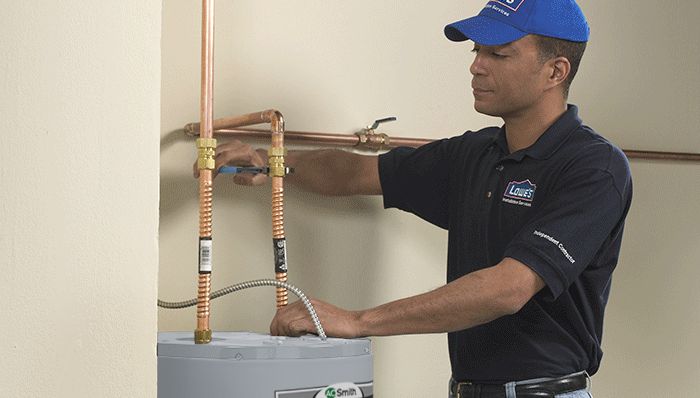What're your opinions concerning Tips For Maintaining Your Hot Water Heater?

Hot water is crucial for everyday comfort, whether it's for a revitalizing shower or washing recipes. To ensure your warm water system runs effectively and lasts longer, routine upkeep is essential. This article gives sensible ideas and understandings on how to preserve your home's warm water system to prevent disturbances and expensive fixings.
Introduction
Keeping your home's hot water system may appear difficult, but with a few basic steps, you can guarantee it runs smoothly for several years to come. This overview covers everything from comprehending your hot water system to do it yourself upkeep ideas and recognizing when to contact specialist aid.
Significance of Preserving Your Warm Water System
Normal upkeep not only prolongs the life-span of your hot water system however additionally guarantees it operates effectively. Neglecting maintenance can cause lowered performance, higher energy costs, and also premature failure of the system.
Indicators Your Warm Water System Demands Upkeep
Recognizing when your warm water system requires focus can prevent major issues. Look out for signs such as irregular water temperature level, odd sounds from the heating system, or corroded water.
Understanding Your Hot Water System
Prior to diving right into upkeep jobs, it's valuable to understand the basic components of your hot water system. Generally, this includes the water heater itself, pipelines, anode poles, and temperature level controls.
Month-to-month Maintenance Tasks
Regular month-to-month checks can assist catch small problems prior to they rise.
Purging the Hot Water Heater
Purging your hot water heater removes sediment buildup, improving efficiency and extending its life.
Checking and Replacing Anode Rods
Anode rods avoid rust inside the tank. Inspecting and replacing them when worn out is essential.
Examining and Readjusting Temperature Level Setups
Readjusting the temperature level setups makes certain optimum efficiency and security.
Do It Yourself Tips for Maintenance
You can execute numerous upkeep jobs yourself to keep your hot water system in top condition.
Looking for Leakages
Consistently evaluate pipelines and links for leaks, as these can result in water damage and greater costs.
Examining Pressure Alleviation Valves
Evaluating the pressure relief valve guarantees it operates properly and avoids excessive pressure build-up.
Protecting Pipes
Insulating hot water pipelines minimizes warm loss and can conserve power.
When to Call an Expert
While DIY maintenance is beneficial, some concerns need expert proficiency.
Complex Concerns Needing Professional Help
Instances include significant leaks, electrical troubles, or if your water heater is regularly underperforming.
Routine Specialist Upkeep Advantages
Specialist upkeep can include thorough evaluations, tune-ups, and ensuring conformity with security standards.
Final thought
Regular upkeep of your home's hot water system is essential for efficiency, long life, and price savings. By adhering to these ideas and knowing when to look for professional aid, you can guarantee a trustworthy supply of hot water without unanticipated disruptions.
Water Heater Maintenance Tips
Test the TPR Valve
Shut off the power and the cold-water supply valve. Place a bucket under the pipe connected to the temperature-pressure-release (TPR) valve on the top or side of the tank. (This valve opens if the tank pressure gets too high.) Lift the valve’s tab to let some water out, then let go. If water keeps flowing, drain the tank partway, unscrew the old valve with a pipe wrench, and install a new one. Check the Anode Rod
Put a hose to the tank’s drain cock and let out a few gallons of water. Now fit a 1 1/16-inch socket onto the rod’s hex head on top of the heater (or under its top plate) and unscrew the rod. If it’s less than ½ inch thick or coated with calcium, buy a new one, wrap its threads with Teflon tape, put it back in the tank, and tighten securely. Use this segmented rod if headroom above the tank is limited. Drain the Tank and Wash Out Sediment
Drain the remaining water in the tank into the bucket, then stir up the sediment on the tank’s bottom by briefly opening the cold-water supply valve. Drain and repeat until clean water comes out of the hose. Close the drain cock, refill the tank, and turn its power back on. Adjust the Temperature
Find the temperature dial on the side of the tank and unscrew its cover. Adjust the dial to 120 degrees using a flathead screwdriver. For every 10 degrees the temperature is lowered, you can expect to save up to 5 percent in energy costs. Turn the water heater off or the thermostat down to its lowest setting if you plan to be away from home for more than three days. Insulate the Pipes
Buy some self-sticking 3/8-inch-thick foam pipe insulation that matches the pipes’ diameter. Slide the foam over the hot-and cold-water pipes as far as you can reach. Insulating the cold-water pipe prevents condensation in summer. Peel the tape and squeeze the insulation closed. If the pipe is 6 inches or less from the flue, cover it with 1-inch-thick unfaced fiberglass pipe wrap. https://www.thisoldhouse.com/plumbing/21016402/how-to-maintain-a-water-heater

As a devoted reader on How to Maintain a Hot Water Heater in a Few Simple Steps, I think sharing that piece of writing was essential. Sharing is nice. Who knows, you may be helping someone out. I thank you for reading our article about Tips For Maintaining Your Hot Water Heater.
Check This Out